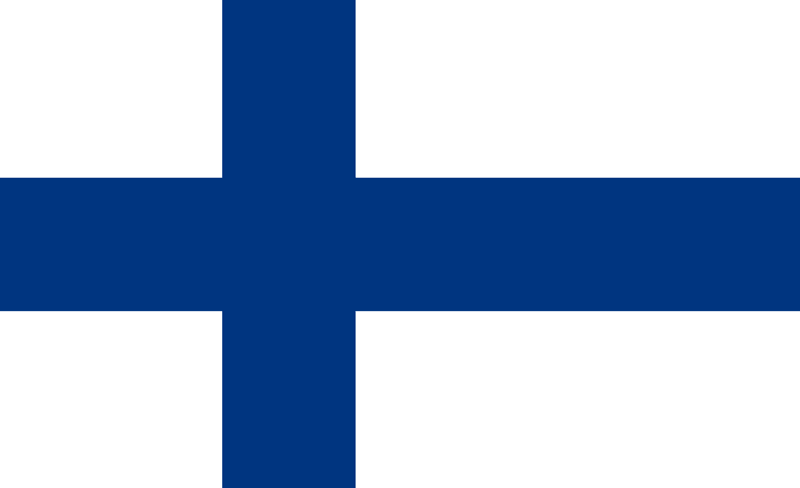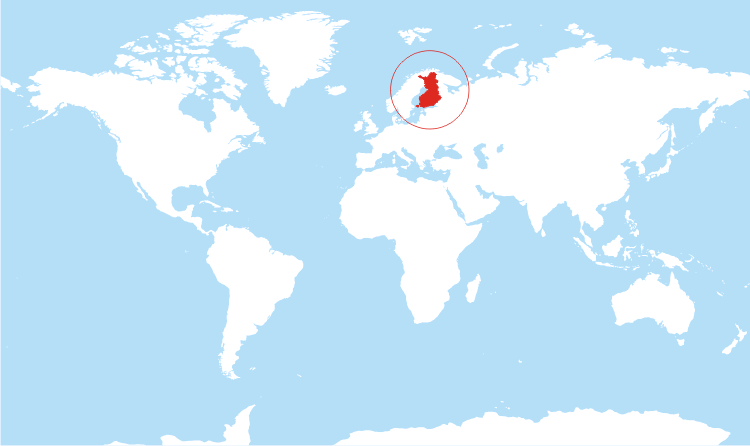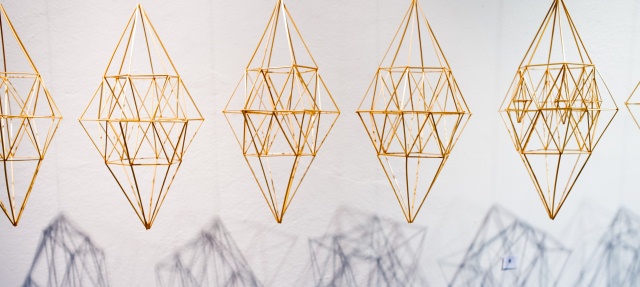
Tervetuloa Suomeen! Welcome to Finland.
FUN FACTS
- Finland, Suomi, is an arctic wonderland in northern Europe that makes up the Scandinavian Peninsula along with Norway and Sweden.
- Finland was ruled by Sweden for 700 years. In 1809 Russia and the armies of Czar Alexander I conquered Finland and took possession of the land. It became a grand duchy of Russia for about 100 years. When the Russian Empire collapsed, Finland declared itself independent and became a republic in 1919. Helsinki is the capital.
- 72% of the country is forests! Finland is among the most forested countries in the world and is the most forested country in Europe. Nature is never far away.
- Finnish people drink more coffee per person than anyone else in the world.
- Finland has been ranked for years among the 5 best countries in the world for its excellent education system. And kids don’t start school until age 7.
- Michigan is home to more Finnish Americans than any other state. Many settled in an area that would become known as the “Sauna Belt,” a region of especially high population density of Finnish Americans encompassing the northern counties of the UP.
- In June and July, the sun doesn’t drop below the horizon. In the winter, the sun never reaches the horizon. There is less than 6 hours of sunlight each day in Helsinki during the shortest days of the year!
- For the third year in a row, Finland has ranked #1 in the UN’s 2020 World Happiness Report. The report is based on six key factors: income, social support, healthy life expectancy, freedom to make life choices, generosity and trust in government.
- You can rent an ice hotel to stay in if you don’t mind getting a little cold.





LET’S TAKE A VIRTUAL TOUR OF FINLAND
Tanja Tammisalo is a former high school exchange student from Finland who studied in the Ann Arbor/Dexter area a few years ago. She now lives and works in Helsinki and wants to say hello to Ypsilanti! Say hi to Tanja and virtually enjoy Finland.
LANGUAGES OF FINLAND
There are two national languages in Finland–Finnish and Swedish!
About 4.9 million people speak Finnish as their first language. Finnish belongs to the Uralic language group along with Hungarian and Estonian.
Watch and video and learn to count to 10 in Finnish.
Since 1992, the Sámi languages have had official status in Finland in the Sámi native region.
You can learn more about the Sámi people of norther Finland as your scroll down the page. There are three different Sámi languages spoken in Finland: Inari Sámi , Skolt Sámi and Northern Sámi . Each of them has its own form of written language. Hear what Northern Sámi sounds like in this video.
LAPLAND
Lapland is Finland’s northernmost region, located in the arctic circle and a sparsely populated area bordering Sweden, Norway, Russia and the Baltic Sea. It’s known for its vast subarctic wilderness, ski resorts and natural phenomena including the midnight sun and the awe inspiring light shows of the Northern Lights (Aurora Borealis). You can visit our Sweden page for an Aurora Borealis art project, or tune in to the Aurora Borealis webcam. The peak hours are around midnight, which is 5pm our time!
THE SÁMI PEOPLE
The Sámi people are indiginous people that have inhabited Sápmi, the northern parts of Scandinavia for thousands of years. The Sámi are the only recognized indigenous people in the European Union. They are typically reindeer herders and live in the part of Finland called Lapland.
This postcard shows some Sámi men with their reindeer in Lapland circa 1900. And you can listen to a present day Sámi herder talk about how much he enjoys his life.

Does Santa live in Finland?
Finnish children know his home to be in the mythological Korvatunturi (Ear mountain) in the northern wilderness of Lapland, a rock formation shaped like an ear so Santa can hear the wishes of every child in the world. .
The biggest town in Finnish Lapland, Rovaniemi, has been dubbed the official hometown of Santa Claus and depends on Santa Claus Village for a large part of its yearly tourism turnover of some $230 million.

FINNISH ART AND DESIGN
FINNISH FOLK ART
Most traditional Finnish folk art are objects from nature. Animals, birds, trees, flowers, and plants are typical. Some also use geometric shapes, such as hearts or circles. These images were used to decorate items used in homes, such as cabinets, bowls, doors, etc.
Try your hand at folk art with the stencils, coloring page and colored pencils in your supply kit!

MARIMEKKO
Marimekko isn’t quiet as well known in the US as Sweden’s home design company, Ikea, but this Helsinki-based company designs home furnishings, textiles, and clothing. You can recognize it by its brightly colored printed fabrics and simple styles.

HIMMELI
Originating from the Swedish word for sky or heaven, himmel, the Himmeli are a traditional Finnish ornament; a mobile decoration that is traditionally made out of straw, or reeds.
They are typically very ornate and are suspended above the dinner table during the holiday season. It is thought that the larger the Himmeli, the larger the rye crop will be in the coming year. During the holidays, the dining room ceilings can be covered with these intricate mobiles.
Use the supplies in your kit to make one!


THE MOOMINS
The Moomins are the central characters in a series of books by Finnish writer and illustrator Tove Jansson. The Moomins are a family of white and roundish trolls with large snouts who live an adventurous life among friends in the peaceful Moominvalley, in harmony with nature.
The largest building in the valley is the Moominhouse, and its occupants (Moominpappa, Moominmamma, and Moomintroll) welcome all visitors from the valley and beyond. The Moomins love the sea and sometimes, they set out on journeys of exploration that take them far from Moominvalley, but they know they always have a safe home to return to. Watch an episode below!

LET’S COOK!
PANNUKAKKU
Do you love Crepes, French Toast, and Pancakes? If you do, you need to try these Finnish Oven Pancakes, pannukakku.

INGREDIENTS
- 1/4 Cup Butter
- 4 Eggs
- 2 Tablespoons Sugar
- 2 Cups Milk
- 1/4 Teaspoons Salt
- 1 Cup Flour
- 1 Teaspoon Vanilla (Optional)
INSTRUCTIONS
Preheat your oven to 400 degrees. Put butter in a 9×13″ glass baking pan. Once your oven is preheated, place your pan in the oven and let the butter melt completely.
Mix eggs, sugar, milk, salt and vanilla together with a mixer or hand held mixer. Stir for 2-3 minutes or until smooth. Add the flour. Stir for 2-3 minutes.
Pour the mixture into the pan (with the melted butter in it). Bake at 400 degrees for 35-40 minutes or until lightly brown. Let cool for 5 minutes and serve with syrup or jam and enjoy!
CRICKET CRACKERS
If you’re EXTREMELY ADVENTUROUS, you may want to try one of Finland’s newest food trends: eating insects, or entomophagy. With a protein content of up to 25 percent, crickets are comparable to beef – and much more environmentally friendly, requiring very little water, food and space. Other edible insects include grasshoppers, termites, mealworms, maggots and various kinds of caterpillars and beetles.
INGREDIENTS
- ⅔ cup cricket flour
- ⅔ cup wheat flour
- 2 teaspoons sugar
- 2 teaspoons salt
- 4 tablespoons olive oil
- ½ cup warm water
- Sesame, fennel, or flax seeds
INSTRUCTIONS
Mix together all of the dry ingredients (except seeds). Add water and oil. Knead the dough until you get the air bubbles out.
Form into 2 thick squares, about 6” by 6” and roll the squares into thin sheets. Season the dough with the seeds. Slice the dough into pieces whatever size you want. Poke holes throughout the pieces with a fork.
Bake on a tray in the oven at 430 degrees for about 10 minutes. Eat, if you dare!

MORE FINNISH TRADITIONS
- Coin = wealth
- 4 leaf clover = good luck
- Piece of blue yarn = gaining a loyal friend
- Piece of red yarn = happiness or wealth
- Sugar cube = easy living, “sweet success”
- Baby = new child in the family
- White button = happiness
- Piece of bread = secure income
- Empty cup = nothing special
EUKONKANTO
Finland hosts a bunch of weird competitions, including Wife Carrying, or Eukonkanto. It’s a contest in which male competitors race while each carries a female teammate. The objective is for the male to carry the female through a special obstacle course in the fastest time. The prize for being the winner of the Wife-Carrying World Championships is the wife’s weight in beer. To determine the amount of the prize, the teammate who was carried sits on a teeter-totter while beer is placed on the opposite end of the teeter-totter until the same weight is established.

FINNISH NEW YEAR CELEBRATION
On New Year’s Eve, an old Finnish tradition was to melt tin on the stove to see the future.The tin was poured into a bucket of cold water, and the newly-formed tin lump predicted your fortune for next year. Many Finnish households even have a little frying pan dedicated only for the tin melting.
Another traditional new year’s game for predicting the future is to place various small objects under cups or plates turned upside down. People playing the game lift one cup at a time, revealing the object hiding under it. Each object has a special meaning, symbolizing things like love, happiness and wealth. The objects used and the things they symbolize are shown to the left.
You can bring the game more up to date by making up your own meanings for the various objects. Pictures of the objects may also be drawn on squares of paper or cardboard, scrambled and placed facing down on the table to be lifted up one at a time, to see what the future will bring. There are some items in your supply kit to get you started!
SISU
THE FINNISH KEY TO LIFE, LOVE, AND SUCCESS
The headline of a New York Times article from January, 1940 read, “Sisu: A word that explains Finland.” The opening paragraph of the full-spread piece stated “It is not easily translated, because no other language has its precise equivalent.”
The word dates back hundreds of years and is roughly translated as“ resilience” or “perseverance.” Resilience, of course, means the ability to adapt to recover from change or misfortune. The Finnish concept of sisu takes that definition one step further—it’s about never giving up, no matter what you’re going through.
SAUNAS
In Finland, it’s the norm to have a sauna in your house… and to jump in a lake after you’ve had one, even in the harsh winter. Especially in the winter. There are over 1.5 million saunas in a country of about 5.5 million people.
NATIONAL FAILURE DAY
Finland created a National Failure Day in 2010. It permits Finnish people to learn from their mistakes and not repeat them. It’s celebrated each year on October 13th.
LEARN MORE
Read a book from the library to discover more about Finland! Or use you library card to read an eBook on Hoopla here.


